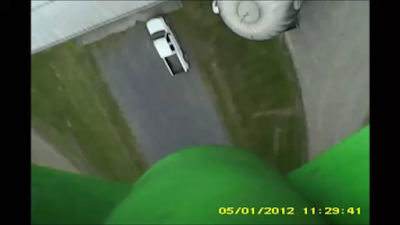Bill, Pete,
Thought I'd share today's activities. Using Bill's excellent wire stripping technique, I was able to finish assembling my 7 MHz bandpass filter. At this point, I'd normally terminate the filter then hook up the signal generator and oscilloscope to manually scan/observe the filter's response. But today, I took a different tack. Using the AD9851/Arduino signal generator I built last year coupled with the W7ZOI AD8307 Power Meter I built this year, I wrote some additional Arduino code to scan a block of frequencies while using the Arduino's A/D to record a level at each scanned frequency, thus characterizing the filter's response. I also used a W7ZOI unidirectional TIA to boost the generator's output to within the full scale range of the A/D. This setup is similar to the popular PHSNA project that has gained attention over the last couple of years. The Arduino formats the data as CSV then feeds it into Numbers (the Mac Excel equivalent.) for plotting (see attached but please forgive the labels/legend on the plots as I didn't take the time to format them). Unfortunately, my Arduino UNO is low on RAM so I'm only able to save a max of 100 scanned frequencies. Even with the lack of resolution, as you can see, the output is definitely useable to get a sense of the filter shape and roll-off. I'm now motivated to write some plotting code so I can get a more real-time output in lieu of the spreadsheet. The output of the AD9851 seems pretty flat within several MHz as is the TIA, so the accuracy should be pretty good within moderately sized scan blocks. Adding additional external FLASH (or moving to a bigger Arduino like the Zero) will fix the low resolution. FYI - Arduino behavior when RAM is low can be very erratic! It started crashing when I got close to the max available :(.
If you haven't as yet, definitely check out the PHSNA project. They've added a boat load of features beyond just scanning filter response . . . and at a fraction of the cost of a spectrum analyzer with a tracking generator.
Brad WA8WDQ
Hi Bill,
I'm having trouble posting a comment in response to Brad, WA8WDQ's
automated Filter scanner project, and I'm hoping you wouldn't mind
passing this tip along. It might be of use to other readers too.
Recent versions of the Arduino software include a Serial Plotter feature
that lets you graph directly from your arduino. By making use of this
feature Brad wouldn't need to save data on the uno - just send it back
to the computer and graph in realtime. It is a little primitive, but
still usable. I believe the plot window is 500 datapoints wide.
There is a nice tutorial on how to use it here:
If you're in a hurry and can survive with a bit of inaccuracy in your
sweep measurement you can also get away with using a simple diode
detector RF probe. This is good enough for a "yep, that filter does
what I want" measurement, but not for measuring exact loss or 3db
bandwidth etc.
Hope that helps,
73s
Greg, VK1VXG




























































.jpg)








